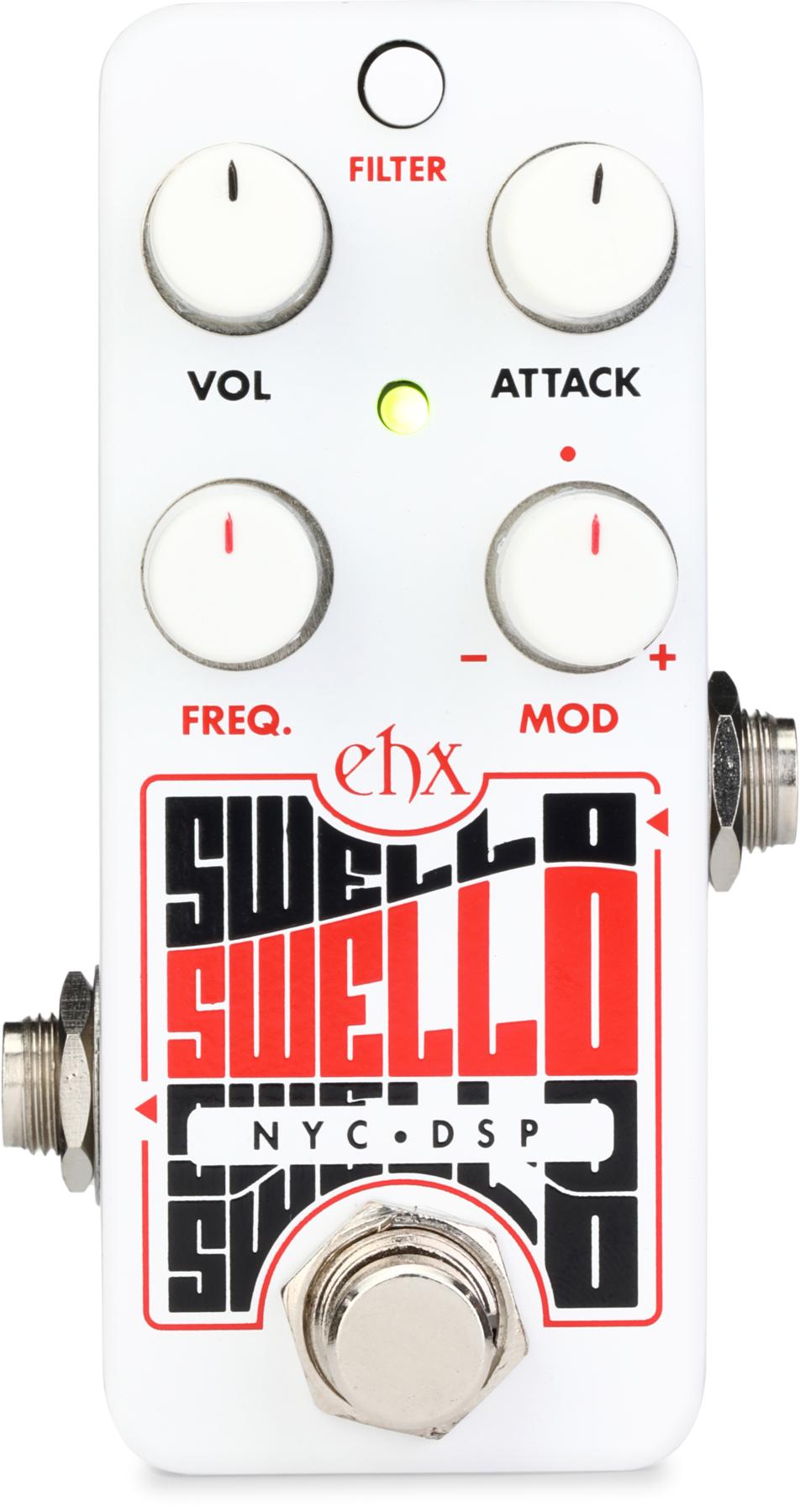By the end of the 1950s, sales for the original single-cutaway Les Paul Standard and Custom models were dropping. This led Gibson president Ted McCarty to have the guitars revamped in 1960 for release in 1961. The new Les Paul’s double-cutaway and lightweight body with contoured edges were influenced by players’ requests for lighter, more comfortable guitars with easy access to the high frets. Also a factor in redesigning the Gibson solidbody line was the popularity of Fender’s Stratocaster and Jazzmaster.
The Les Paul Standard was the first to receive the new design, and the Les Paul Custom followed soon after. The guitars’ new body measured 12 3/4" wide, 16" long, and 1 5/16" deep. (Compare that to the original single-cutaway Les Paul body, which measured 12 3/4" wide, 17 1/4" long, and 1 3/4" deep).
But a few things stayed the same: The new Les Paul kept the 24 3/4" scale on a 22-fret neck and also retained the split-diamond headstock inlay and gold hardware of its predecessor. The ’61 Standard’s mahogany body (which lacked the maple cap of the prior version) was stained cherry red, while the ’61 Custom was finished in “gleaming white,” rather than the black of the original Custom. These reimagined Les Pauls were also equipped with the newly designed (and soon abandoned) “sidewinder” vibrato.
The ’61 Les Paul Custom featured here matches the details provided in Gibson’s 1961 catalog, which reads:
- Ultra thin, hand contoured, double-cutaway body.
- New extra slim, fast, low-action neck—with exclusive extra low frets—joins body at 22nd fret.
- One-piece mahogany neck with adjustable truss rod.
- Ebony fingerboard, deluxe pearl inlays.
- Adjustable Tune-O-Matic bridge.
- Three powerful humbucking pickups with unique wiring arrangement.
- Two sets of tone and volume controls.
- Three-way specially wired toggle switch.
- New Gibson Vibrato—operates in direction of pick stroke, swings out of way for rhythm playing.
This 1961 Gibson catalog also shows the Les Paul Custom priced at $425 plus $47.50 for a 0537 Faultless gold plush-lined case. The current retail value for a 1961 Gibson Les Paul Custom is about $10,000.
Gibson’s “sidewinder” vibrato tailpiece was not a hit with most guitarists and the company ultimately
abandoned the design.
In case you didn’t know what you were playing, the pickguard would inform you.
The ’61 Custom retained the split-diamond headstock inlay and gold hardware of the ’50s original.
Sources for this article include Gibson Electrics—The Classic Years by A.R. Duchossoir, The Early Years of the Les Paul Legacy 1915-1963 by Robb Lawrence, Gibson Guitars—Ted McCarty’s Golden Era: 1948-1966 by Gil Hembree, and the 1961 Gibson catalog.
Dave’s Guitar Shop
Dave Rogers’ collection is tended by Laun Braithwaite and Tim Mullally and is on display at:
Dave’s Guitar Shop
1227 Third Street South
La Crosse, WI 54601
davesguitar.com
Photos by Mullally and text by Braithwaite.






























